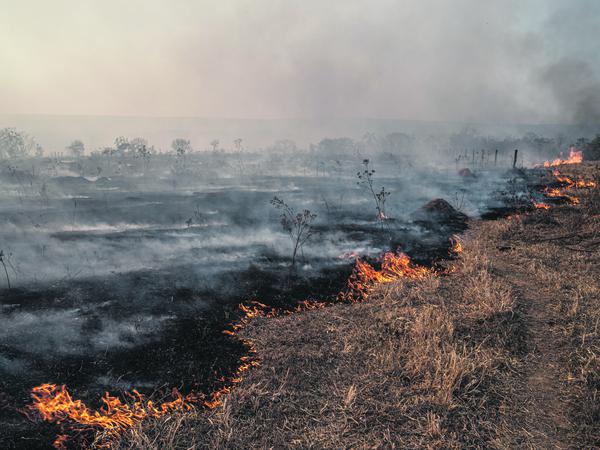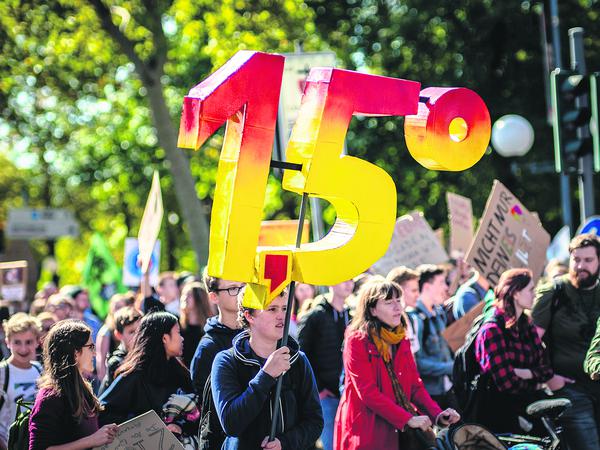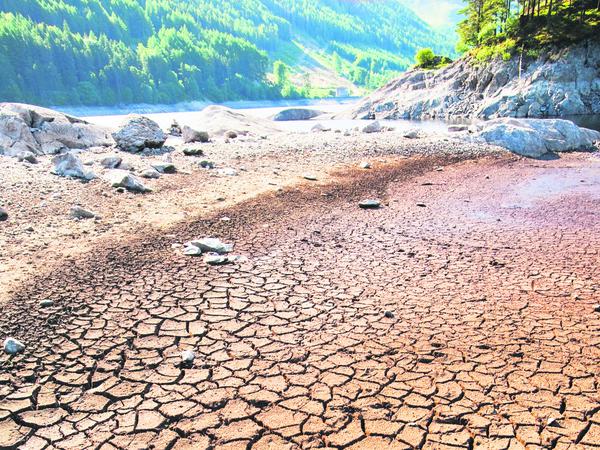
© Getty images/Paul Souders
Research and Climate Change: Should We Hold on to 1.5°C?
Global warming continues to advance, yet to date there is still a lack of policies that comply with the 1.5°C target. What conclusions science and society should draw from this.
Stand:
2025 marks the tenth anniversary of the Paris Climate Agreement. At the 2015 United Nations Climate Change Conference, nearly 200 countries agreed to limiting global warming to 1.5°C. Yet, this year has seen little reason to celebrate. According to the EU’s Copernicus Climate Change Service, average temperatures across Europe have exceeded the limit of 1.5°C above pre-industrial levels in almost every month since July 2023.
This does not mean that we have exceeded the target set down in the Paris Agreement, as in climate science, our point of reference for global warming is average temperatures across a time span of 20-30 years. But fact is that we will not achieve the 1.5°C target with what countries are currently promising in their Nationally Determined Contributions under the Paris Agreement; we are more likely to face a 2.6-3.1°C world. Also recent German climate policy is not considered to be 1.5°C compatible.
In light of all this, one might well wonder whether we need the target anymore.
The Intergovernmental Panel on Climate Change (IPCC) originally suggested limiting the average global temperature increase to 2°C above pre-industrial levels. This was the generally accepted target for many years. The 1.5°C target came about rather abruptly at the United Nations Climate Change Conference in 2009 at the insistence of the Alliance of Small Island States (AOSIS). These countries argued that only by limiting warming to 1.5°C can life-threatening events, such as the disappearance of a large proportion of habitats on small islands, be avoided. With the backing of a large number of experts from politics, science, and society, the target was included in the 2015 Paris Climate Agreement.
Three years later, the IPCC published a special report that made clear: The difference between 1.5°C and 2°C is drastic, with many of the expected climate change impacts such as extreme heat, sea level rise, or biodiversity loss expected to more than double in severity.

© Getty Images/ Lucas Ninno
Since then, the 1.5°C target has been widely translated into policy plans and action programmes for cities, businesses, and even individuals (e.g., carbon footprinting and „1.5°C lifestyles“). Social movements and activist groups such as Fridays for Future, or corporate initiatives (e.g., the Science Based Targets Initiative) have also taken it up. „1.5°C“ has become the golden number for activities aimed at protecting the climate.
Orientation and motivation
Goals matter. They set standards and shape our aspirations. They provide a benchmark against which we can measure our efforts. Climate Action Tracker, for example, uses a scale ranging from red to green to indicates whether countries’ national climate plans are „1.5°C compatible“ under the Paris Climate Agreement. This enables us to determine whether our governments are doing enough to protect the climate. Courts are also doing this. In July 2025, the judges of the International Court of Justice in The Hague referred to the 1.5°C target and ruled that states are obliged to protect the climate under international law.

© Unsplash/Mika Baumeister
But (climate) goals are also important psychologically. They provide orientation and motivation. People tend to be more committed when they know what they want to achieve. Goals promote the feeling that your actions matter and that you can achieve something. A global climate target also stands for the hope that we can overcome the climate crisis by working together. The 1.5°C target makes complex scientific relationships such as global warming a little easier for us to understand. The 1.5°C target is specific, measurable and time-bound. This gives it a clear advantage over the rather abstract demand that states should „protect the climate and save the world“. Emissions budgets and national responsibilities (NDCs) can be derived from this target.
Steer discussions in the right direction
The 1.5°C target serves to create a social norm for what measures should be necessary and ethically justifiable. It provides a point of reference for individuals and groups to make judgements and decisions and guides political and social debates around these. A figure that is as ambitious as possible helps to steer the discussions in the right direction and stay as close as possible to the original objective.
We are indeed on the verge of exceeding the target and – a decade after the signing of the Paris Agreement – there is still a lack of 1.5°C-compliant policies. Worse yet is the pervasive sense of hopelessness, powerlessness, and thoughts like „We can’t do anything anyway!“ and „If others don’t do more, our contribution won’t make a difference.“
Achieving 1.5°C is about ensuring a decent life on Earth for as many people as possible.
Charlotte Unger, Social Scientist
Given all this, it is time to change the way that we communicate around climate issues in both politics and science.
We must continue to orient our climate protection efforts at 1.5°C and endeavour to avoid the unbearable harm that is all the more likely to occur the more we exceed this limit. But exceeding 1.5°C does not jeopardise the consensus on which the Paris Agreement is based.
Every little bit we achieve is better than the status quo
The 1.5°C target should not be understood as a dividing line between a safe and an unsafe climate or a threshold at which the climate suddenly collapses and the world „comes to an end“. Exceeding 1.5°C does not mean that all our efforts to protect the climate have been in vain. When we talk about 1.5°C, we should always make it clear that „every tenth, every hundredth of a degree counts“: Every little bit we achieve is better than the status quo.
A narrative that promotes the understanding that “every tenth of a degree counts“ could be supplemented by descriptions that draw direct links between measures to protect the climate and future events. Achieving 1.5°C is about ensuring a decent life on Earth for as many people as possible. Hundreds of millions of people are already suffering from the consequences of climate change every day. They experience food shortages due to failed harvests, are unable to go to school or work due to extreme weather events, or suffer health problems.

© Getty Images/Ashley Cooper
Through effective communication, we can encourage agency and foster a stronger sense of togetherness. If every small step counts, then each individual contribution matters – whether it is saving energy, driving less, or reducing meat consumption.
At the same time, we should be honest about the fact that even a “temporary overshoot of 1.5°C” is accompanied by many risks. Technical options for removing CO₂ from the atmosphere are difficult from a social perspective and many of the consequences of climate change, such as the extinction of species or the loss of coral reefs, are irreversible.
Ten years on from the adoption of the Paris Climate Agreement, our aim should be to inspire hope: We have made progress, and there are many examples that highlight what humanity stands to gain from the great transformation. We must continue to endeavour with all our might to achieve the 1.5°C target. But we should not give up hope if we do exceed the target.